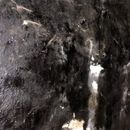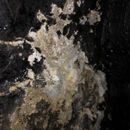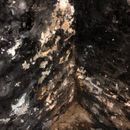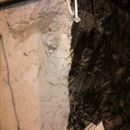Basement walls: spalling and insulation
A section of my 1940s foundation walls (Boston) have a couple issues that I’m trying to see what needs to be done prior to insulating with CCF. First, parts that were painted black there is a shiny, sticky tar substance on them. Other areas that are painted white don’t seem to have this. What is it?
The wall that is 100% below grade seems to have some spalling going on. There are also lots of white crystals growing from them. Any ideas?
The first 5 years I owned it I would occasionally get a little standing water from multiple inch type rainstorms. Last year I diverted a downspout that was dumping in to this area and haven’t seen it since. There are a couple what look to be water stains so maybe a little bit is still getting in some how?
How long does this spalling/white crystals take to accumulate? If I scrape it all down how long will I have to monitor before taking action?
Thanks
Kevin
GBA Detail Library
A collection of one thousand construction details organized by climate and house part













Replies
Hey Kevin.
Seems like your walls are affected by efflorescence and spalling, which are probably do to the lack of a capillary break, not the standing water issue that you have already fixed. You can read a short article about that here: Efflorescence and Spalling in Concrete. I wonder if the black material was someone's effort at sealing the walls to prevent the problem from getting worse.
From what I know about the issue, the only solutions that you can apply from the interior, like another sealer or a parge coat of concrete and lime stucco are temporary fixes and any real fix would have to take place from the exterior of the foundation.
That said, who knows if it is ongoing. If you can scrape everything off of the wall and monitor them, you'll know. How long you'd need to wait to have some assurance, I'm not sure.
Thanks Brian. I didn’t even think that the black paint could have been some sort of sealer- that would make more sense. And maybe the sticky areas are its’ attempt at keeping moisture out (working in most areas).
I saw “subslab sheeting” in your article and thought that can’t be cheap. Again, this might be the culmination of 80 years of moisture and I’m just noticing it now. Sounds like I should scrape it down and clean it all up and monitor. Another parge coat seems like a temp fix. However I’d like to finish off this area at some point and get it all behind drywall.
Is this what is referred to as “drying towards the interior”? And would CCF force this moisture up towards the sill plate?
Kevin
There could be any number of causes, from footing drains not working (or not existing) to no damp-proofing on the exterior of the foundation walls.
When you hear the term “drying towards the interior,” typically it is meant to articulate a strategy in wood-framed walls which we need to allow to dry and should plan how that drying is going to occur. That's about vapor drive; this is the result of capillary action.
I'm not sure about your last question regarding the application of closed cell spray foam on these walls. My concern with that would be that you will no longer no what condition the walls are in. Spalling can lead to more serious degradation and structural failure, but perhaps that would be evident by now.
I bet you'll hear from some GBA users with experience remedying these situations.
Is this a stone/rubble foundation that has an interior sacrificial parge mortar or something? (It doesn't look anything like poured concrete!)
The capillary draw in most New England stone foundations is only in the mortar, not the stone, and a capillary break at the sill isn't usually necessary. But before insulating the wall from the interior, stripping and replacing any loose mortar with the appropriate material would be in order. Consult a mason.
It's a lot of work (and money) but digging down and repairing rubble wall from the exterior would allow the application of an exterior side waterproofing, a drainage dimple-mat, and improve the overall drainage, or even insulating from the exterior.
Correct- it’s large rubble blocks. Is the parge coat necessary?
Wire brushing the loose areas and re-parging would be pretty easy- it’s not that many sq feet. Most areas haven’t gotten down to the block just the first couple fractions of an inch.
Pic. It’d be nice to have a higher than 3mb limit- tough on mobile devices.
That looks like site-manufactured true cinder block, not rubble.
The parge layer is there to protect the mortar & cinder block from degradation as moisture seeps through the wall. Most of the chalky efflorescence you're seeing is mineral that has leached from the protective parge layer rather than the mortar or block. Traditional sacrificial parges are typically good for 75-100 years, so it's not surprising to see parts of it failing/crumbling after 80 years. You DEFINITELY want to re-parge it before putting a finish wall (insulated or uninsulated) in front of it.
Consult a mason as to how to best treat it, and let them know you intend to insulate it. Unlike many rubble or fieldstone foundations, cinder block walls are usually flat enough to use rigid foam board instead of spray foam, and in the Boston area that can often be cheaper (and greener) using reclaimed roofing foam from one of several vendors (the biggest being Nationwide Foam/Insulation Depot on Waverly Street in Framingham.)